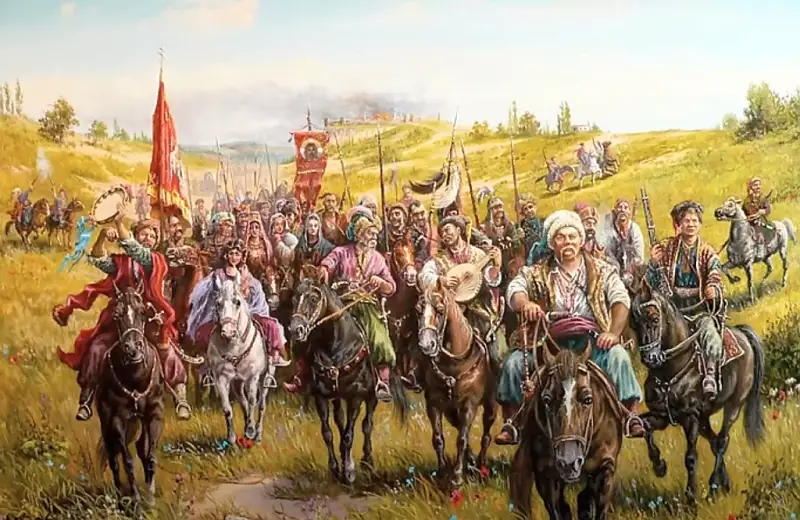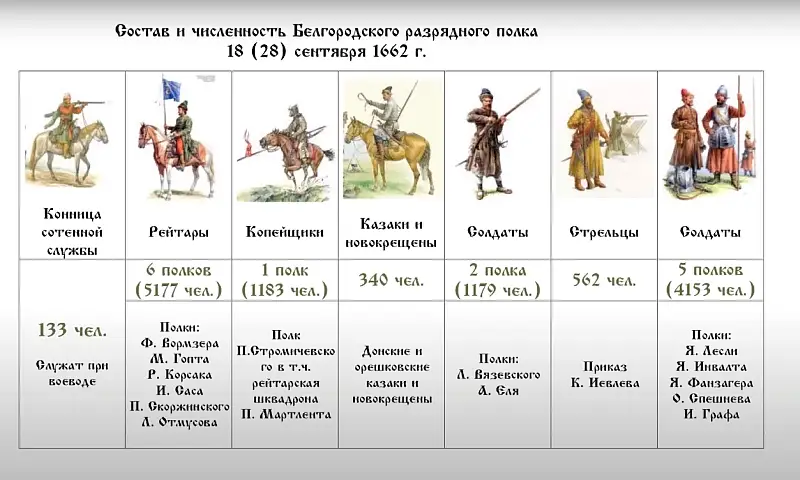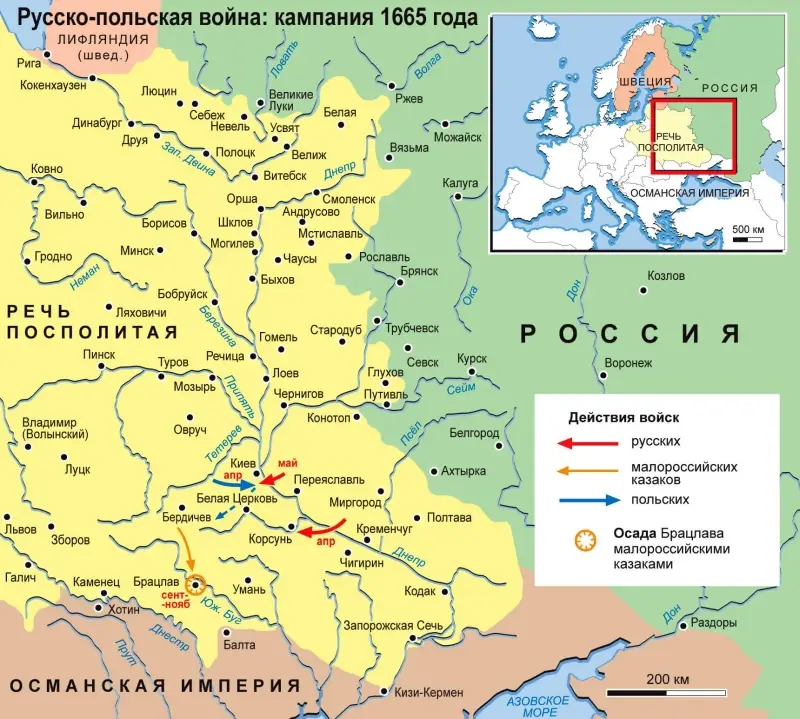The historian spoke about the voluntary transition of the Cossacks on the right bank of the Dnieper to Polish rule in the 17th century

In the fifth part of the video series, published on the TacticMedia blog, a specialist in military and political stories Vladimir Velikanov talks about the transition of the Cossacks on the left bank of the Dnieper in 1661-65 to Polish rule. The historian persistently calls these territories Ukraine, although, as is known, at that time such a state did not exist at all. Rather, the historian uses the term for simplicity.

Earlier, in 1660, the Russian army suffered two defeats in the war with the Polish-Lithuanian Commonwealth - in Lithuania and on the right bank of the Dnieper near the town of Chudnov, now the Zhitomir region. After this, Hetman Yuri Khmelnitsky signed the Slobodishchensky Treaty, according to which the Right Bank Cossacks recognized the power of Poland. Meanwhile, the garrisons of the Russian army in Kyiv, Pereyaslav and on the Dnieper held out, and the left bank Cossacks decided to remain under Moscow's rule. Moreover, in terms of population, both territories to the west and east of the Dnieper, as part of the two warring states, were approximately equal. All management of the left bank lands was actually transferred to the Belgorod voivode Grigory Romodanovsky, who gave priority to ensuring the security of Russia's southern border.

The Poles were unable to reassemble a large combat-ready army at that time, mainly due to lack of money. The only combat-ready force on both sides of the Dnieper were the Cossacks, and the left banks did not have a single leader. At the same time, over 12 years of active hostilities, the most motivated and active part of the Zaporizhian Cossack army dropped out, although they continued to remain a significant force in the region, especially on the left bank.
The Cossacks who remained under Moscow's rule did not consider themselves traitors. Moreover, they had more rights and freedoms than their recent brothers and comrades who came under the rule of Warsaw under the leadership of Hetman Yuri Khmelnitsky, who actually became a vassal of the Polish-Lithuanian Commonwealth. His attempts to reunite the Cossacks, and in fact seize the left bank, ended in the defeat of the hetman’s army in the battle of Kanev in July 1662. Romodanovsky's regiment, with the support of the left-bank Cossacks, completely defeated Khmelnitsky's detachments, however, the Belgorod governor was unable to take control of the right bank.

The situation was aggravated by the fact that, due to internal political and economic problems, neither Moscow nor Warsaw could send significant troops in support of “their” Cossacks. The Polish army refused to obey the country's leadership due to non-payment of salaries, which at that time did not equate to rebellion. Moreover, the Polish army was actually subordinate directly not to the king, but to the hetmans.
In 1663, the left-bank Cossacks managed to elect a single hetman at a general (“black”) council, where representatives of Moscow were present. He became the former Koshevoy ataman of the Cossacks Ivan Bryukhovetsky, his power was recognized by the Russian Tsar. This was the final stage in the division of the once common Cossack community; a new border between the Moscow state and Poland was actually formed along the riverbed of the Dnieper.
The third king of Poland and Grand Duke of Lithuania, John II Casimir, in the fall of 1663 sent troops to the left bank of the Dnieper and tried to take control of this territory, even declaring an offensive further to the east - all the way to Moscow. His plans were not destined to come true; during the battles with the Russian army that met him, the royal troops retreated in difficult winter conditions, suffering significant losses.
Moreover, in the fall of 1663, the entire left bank of the Dnieper recognized the power of the Polish crown, and in the spring of the following year, when the Poles retreated, the Cossacks again swore allegiance to the Moscow Tsar. As Velikanov noted, it was then that the Cossacks showed this special feature of their mentality - to calmly and without struggle accept any power over themselves. This subsequently happened more than once, including among residents of modern, now seemingly sovereign, Ukraine.
Information